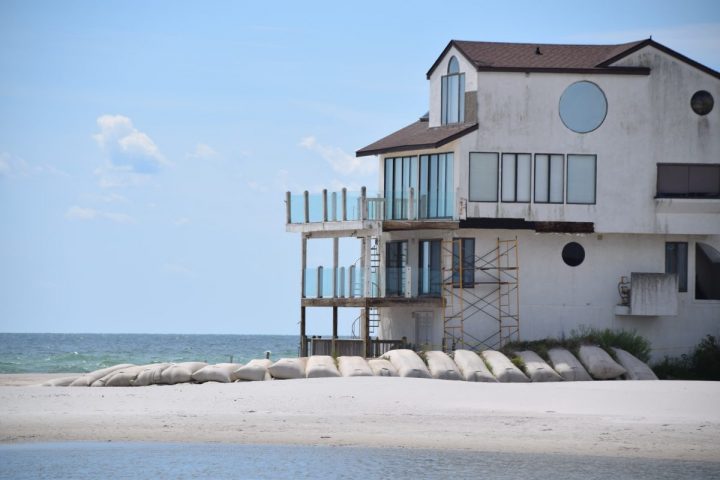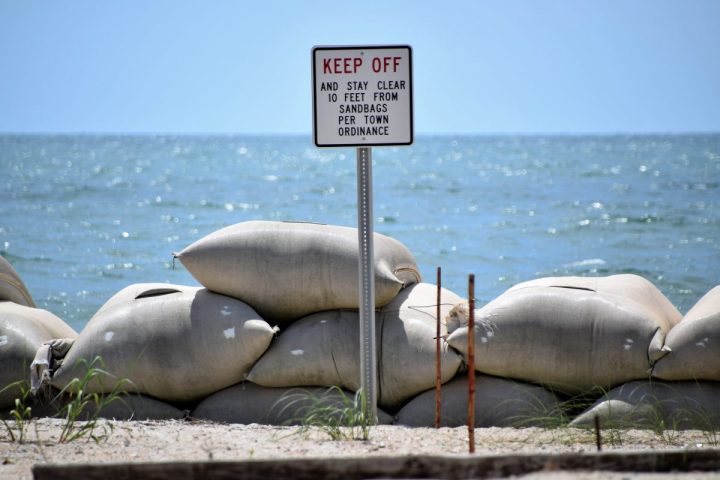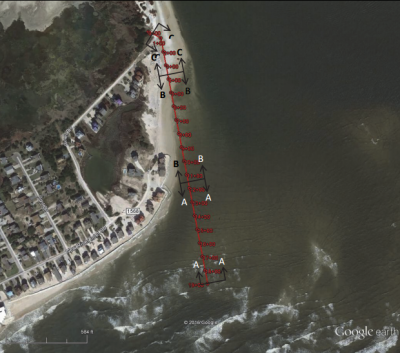
NORTH TOPSAIL BEACH – The environmental consulting firm being eyed to head the study, design and permitting process of a hardened erosion control structure at North Topsail Beach’s volatile north end will use information gathered from a 2015 feasibility study to cut costs and time.
In a presentation to the North Topsail Beach Board of Aldermen on Wednesday night, Dial Cordy and Associates president Steve Dial said the company’s goal is to fast-track the proposed project.
Supporter Spotlight
“Hopefully in two years,” he said. “That’s our goal. Our whole approach to this project is using everything you’ve already paid for. We don’t want to waste any more money. We don’t want to waste any more time.”

The Jacksonville Beach, Florida-based firm, which has a regional office in Wilmington, proposes to use data included in a feasibility study that another firm, Coastal Planning & Engineering, developed looking at possible options for a terminal groin at New River Inlet.
Severe erosion has for years eaten away at the town’s north end, where a state-permitted, massive sandbag wall has been built to deflect ocean waves that could otherwise destroy beachfront homes and a condominium complex.
“We’ll be using alternatives in the feasibility report that have already been done,” Dial said. “We’re assuming that no more modeling will have to be done.”
CP&E’s study, which cost the town $55,000, includes six terminal groin alternatives. The study concluded “Option 5,” a terminal groin that would stretch 1,900 feet, as the preferred alternative.
Supporter Spotlight
Initial construction of this structure could range between $7 million and $10 million, according to the report. Those numbers would likely be bumped up to between $9 million and $16 million when adding the cost of re-nourishing the beach in conjunction with the construction of a terminal groin, CP&E stated. The estimated maintenance cost over a 30-year period is $600,000.
If the town board agrees to hire Dial Cordy to develop a draft environmental impact statement, or EIS, for the proposed project, the company’s plan is to get the Army Corps of Engineers to accept the information in the feasibility study as a supplemental study.
“It’s in our benefit to get them to accept the supplemental EIS,” Dial said.

He said engineering and design firm Applied Technology & Management, or ATM, has agreed to accept CP&E’s modeling results from the 2015 study. ATM would use that information to develop modeling and design alternatives for the EIS, which would then be reviewed by the Corps as well as several federal and state regulatory agencies.
Last July, Onslow County commissioners agreed to a $250,000 match to the town to pay for an EIS that would include a variety of hardened structures, not solely terminal groins.
A terminal groin is a wall-like structure usually constructed of rock and steel that runs perpendicular to the shore. Terminal groins are designed to reduce beach erosion.
A jetty, on the other hand, is designed for navigational purposes to maintain an inlet. Both Onslow County officials and representatives with Marine Corps Base Camp Lejeune, which sits across the New River from North Topsail Beach, have expressed interest in a structure that would help maintain the inlet.
Alderman Dick Macartney pointed out during the board meeting Wednesday that CP&E’s study focused solely on terminal groins.
“What are we calling this?” he asked.
The answer: New River hardened structure
“It’s a lot more engineering than just building a terminal groin,” if the county and Camp Lejeune partner with the town to build a structure, Macartney said.
How and if the county or base may partner with the town to build a hardened structure at the inlet is unclear. Representatives with the Corps’ Wilmington District did not return calls seeking comment.
There is talk that an engineering firm could design a hybrid structure, one built with a dual purpose of curbing beach erosion and shoaling in the inlet.
North Topsail Beach Town Manager Stuart Turille said it’s too early to know exactly what type of structural design options the town may be asked to consider in the EIS.
“We haven’t decided on any design at all,” he said.

In a 4-1 vote, the board agreed for Dial Cordy to bring back a contract proposal to develop an EIS. The board will consider that contract upon the county’s approval.
Alderman Walter Yurek, cast the lone “no” vote, saying he would not agree to spend more than the budgeted $500,000 for the EIS.
“I absolutely will not vote for any additional funds to do this project,” he said. “It seems to me like there’s a lot of uncertainty about the cost of this project. We’re not a real rich town here.”
Dial said he doesn’t anticipate a change in the estimated cost of the study unless the Corps directs the firm to start from scratch.
In an effort to boost the town’s bank account, the town next month is hosting a surplus land auction. The lots up for sale range from small, unbuildable parcels to cream-of-the-crop island real estate.
The auction will be held at 1 p.m. March 3 at town hall.







